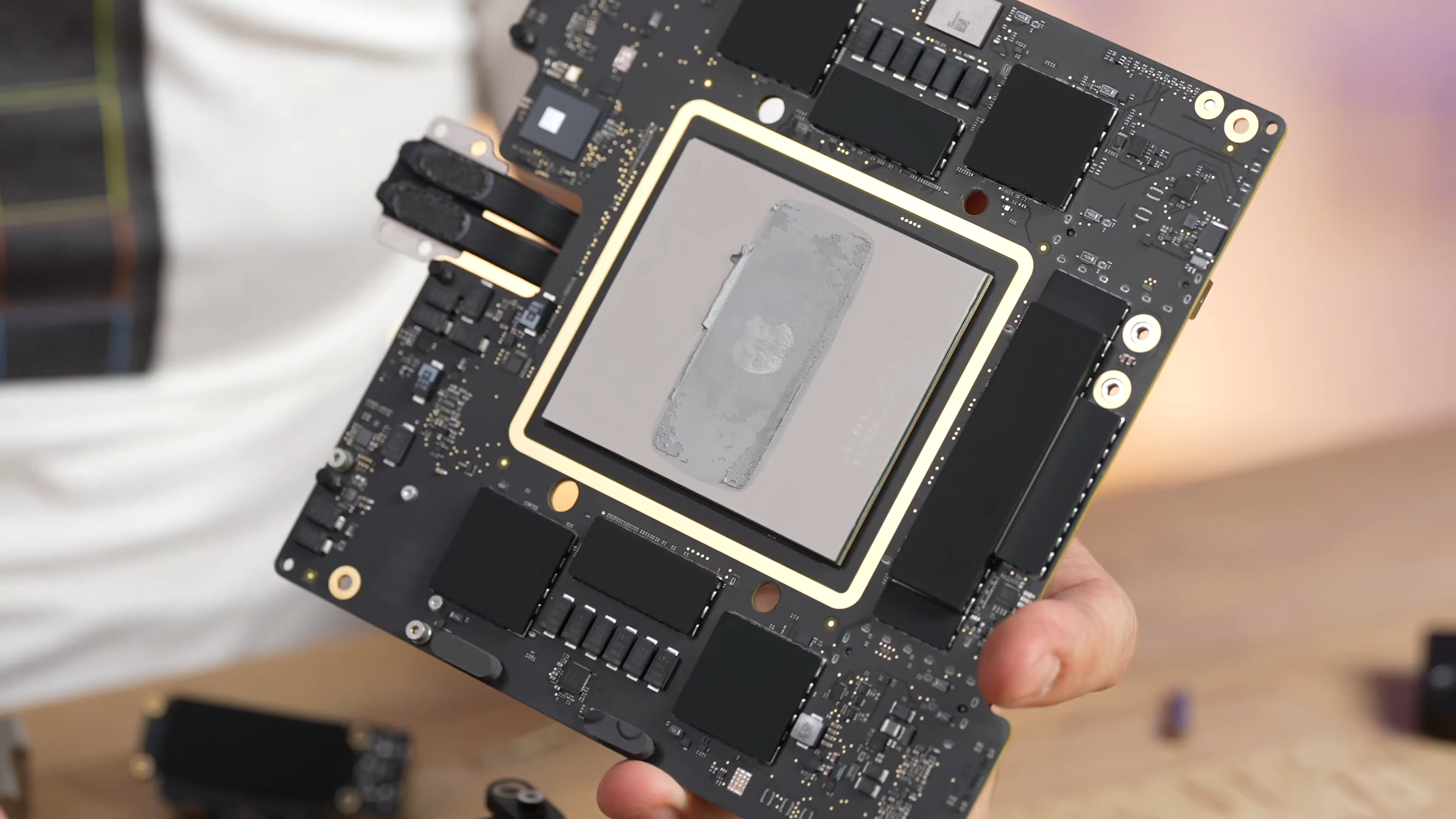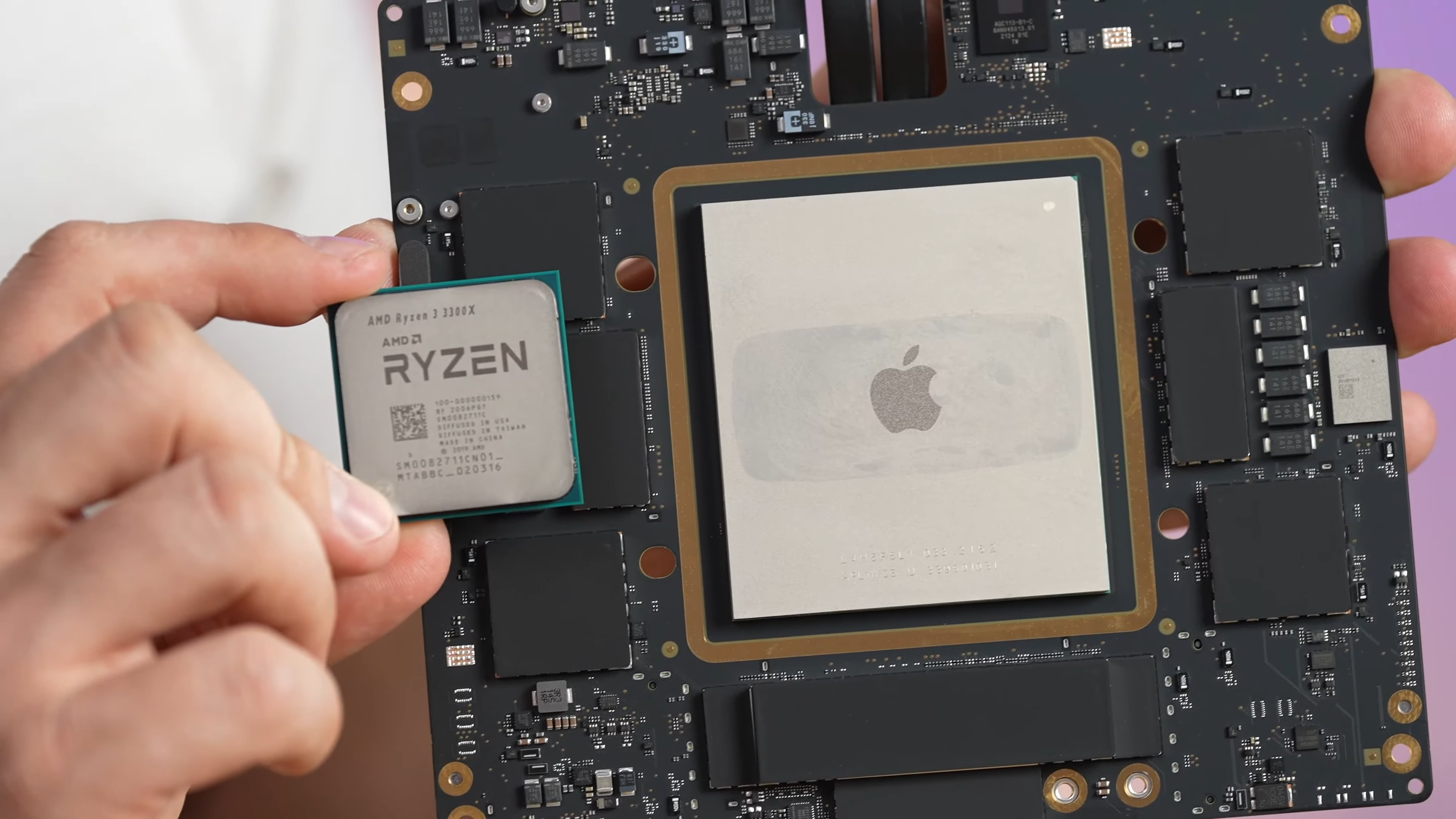That, at least on paper, gives it the power of two M1 Max SoCs on a single package, doubling everything in the process. The M1 Ultra is rocking a 20-core CPU along with a 64-core GPU. If you remember, the M1 Max has a 10-core CPU and a 32-core GPU, so yeah, the two M1 Max dies mixing together is literally doubling the numbers. As for the other specs, you’ll get a memory bandwidth of 800GB/s on top of the 128GB of shared memory between the CPU and GPU.
M1 Ultra Size
Putting the specs aside, let’s get to the juicy bit. Max Studio, a YouTube channel covering tech, did a full teardown of the new Mac Studio recently, which uncovered a lot of interesting things. First being the fact that Apple’s “Modularity” claim at the reveal event was completely bogus. Nothing in the Mac Studio can be upgraded, neither is the machine designed with upgradeability in mind. So, unless Apple considers plugging in and plugging out displays “modularity”, that was pretty misleading. Secondly, and more importantly, we got to see the insides of the Mac Studio in their full glory. Right away, we can tell that the Mac Studio is a densely packed machines with stacked layers of PCB and barely any room inside. It’s a highly-impressive engineering job to achieve this level of efficiency. But, moving along, after dissembling a lot of parts, we finally get to the mainboard, or the PCB with the M1 Ultra itself. As you can tell, it’s big. Nearly three times the size of a desktop Ryzen processor. After all, it’s really just two M1 Max die connected together in a neat little package. However, that alone won’t make the SoC as large as this. The reason for the M1 Ultra’s enormous size is because the package not only houses the 20-core CPU and the 64-core GPU, but also all of the I/O and the 128GB of memory. Sadly, the bare die itself isn’t visible because of the huge heat spreader atop, though if someone can somehow de-lid the package, the silicon innards will reveal themselves. Regardless, there is a little bit of thermal paste smeared in the center of the package on top of the Apple logo to keep it all cool, which you can see has been cleaned up a bit for the second picture. Compare this to the size of the Ryzen 3 3300X, a standard AM4 desktop processor and the dimensions on the Apple M1 Ultra are significantly bigger.
False claims
Apart from the specs, Apple also brought some wild claims to its launch event of the chip, saying how the M1 Ultra’s GPU can compete with the likes of the 400W RTX 3090 desktop GPU while consuming much less power. On top of that, the company was also noted saying that their chip consumes 90% less power as compared to the Core i9-12900K while performing the same, and that it actually performs better when consuming at 100W power consumption. None of these claims are actually a 100% accurate: From the benchmarks attached above, you can see that, while the M1 Ultra certainly holds its own, it does not so against the claims. Even in the following GeekBench 5 Metal and OpenCL benchmarks, which test the synthetic performance of a GPU, the M1 Ultra falls short of the RTX 3090 by roughly 100,000 points. You can fit another M1 Ultra on top of that and still not be able to reach RTX 3090 levels. And, as for games, well, I’m not the first to tell you that a Mac is the last thing you should game on. The M1 Ultra is an impressive chip and one that wouldn’t have been able to power a machine like the Mac Studio without such tight integration from Apple. While it doesn’t win in every single benchmark thrown at it, even the ones it should’ve won according to Apple’s claims, in real-world usage, it still feels as smooth as any Apple device and provides ample headroom for creatives. After all, for Apple to make a computer basically as powerful as the $50,000 28-core iMac Pro in such a small, quite, cool, and honestly cheap, form factor is nothing short of an engineering marvel.







